Conference on unique on the European scale natural site
On 20th September this year in Sitaniec – Wolica on the outskirts of Zamosc, we held conference within the framework of the LIFE13 NAT/PL/024 project. The aim of the conference was to present the specifics of habitat 7230 – alkaline fens, especially in the Lublin region and ways of its protection. The main objective of the conference was to familiarize participants with the unique on the European scale the natural site, which is the spring fed fen dome in Komarov / Śniatycze. During the conference, as well as during the site inspection of this unique fen discussion was initiated on the protection of the place, mainly in improving water conditions.
During the conference – while presentation of Robert Stańko – we discussed issues related to spring fed fens and its specificity, including hydrology, functioning, threats and protection of spring fed fens in Poland. The floristic qualities of selected alkaline fens in Lublin, in particular the fen in Śniatycze was discussed by Filip Jarzombkowski (Naturalist Club, Institute of Technology and Life Sciences).
Spring fed fen dome in Śniatycze (also known as Komarów) is situated in the Natura 2000 site “Dolina Sieniochy” PLH060025 within the community Komarów – Osada.The fen is divided by an artificial watercourse – regulated, the northern branch of the river Sieniocha. The fen has an unique wealth of rare and protected plant species. Here you can find among others, Swertia perennis ssp. Perennis (one of the largest populations in the country!), Schoenus ferrugineus, Schoenus nigricans, Tofieldia calyculata, Carex davalliana or Pinguicula vulgaris subsp. bicolor.
The spring fed fen domes occupy less than 1% of the area of fens in Poland, while living spring fed fen domes are even rarer and unique! The opinion of the uniqueness of the Śniatycze / Komarov spring fed fen dome was confirmed by prof. Radosław Dobrowolski from the University of Maria Curie – Sklodowska in Lublin. Prof Dobrowolski together with the group of an excellent specialists led the study of this site in a project funded by the Ministry of Science and Higher Education. Detailed studies, among others, sedimentological analysis, palaeobotanical, malacological, geochemical, isotopic C12O18 or radiocarbon dating confirmed that the object is the one of the most valuable wetlands in this part of Poland and Europe. Its special qualities confirms foremost nothing disturbed geological structure. The period of deposition of limestone necrosis in approx. 600 cm profile here lasted nearly 10 thousand years! The profile perfectly reflects the correlation between changes in climate (temperature and humidity), and the rate of growth of the fen dome, including the layers of limestone necrosis.
We hope that the conference, along with the field trip helped to expand the group of people that will support the planned activities in the site, maintained in order to preserve this precious fen, mainly by improving hydrological conditions.
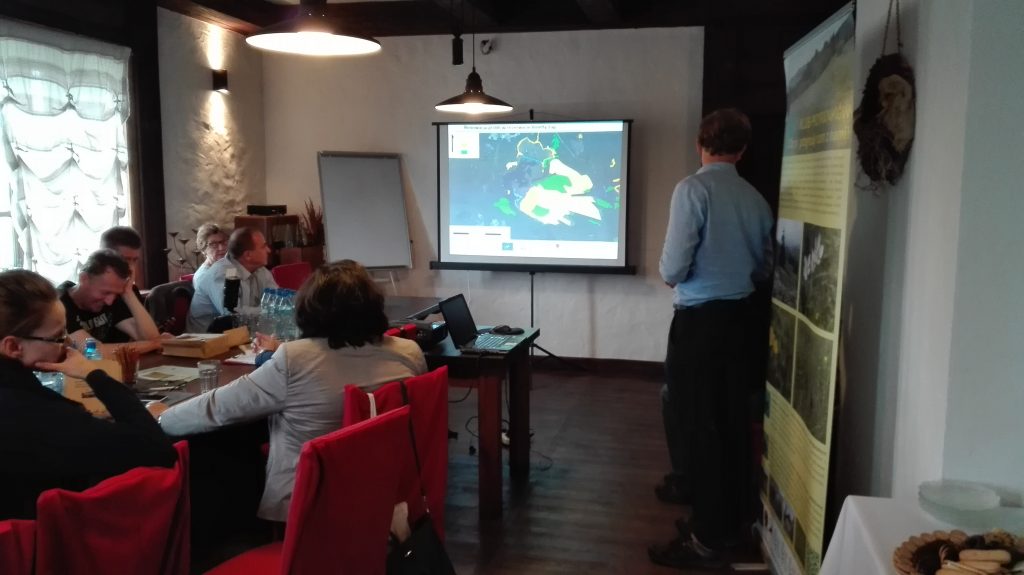
Krzysztof Wawer from RDOŚ in Lublinie presents project pn. „W zgodzie z naturą – LIFE+ dla Lasów Janowskich”
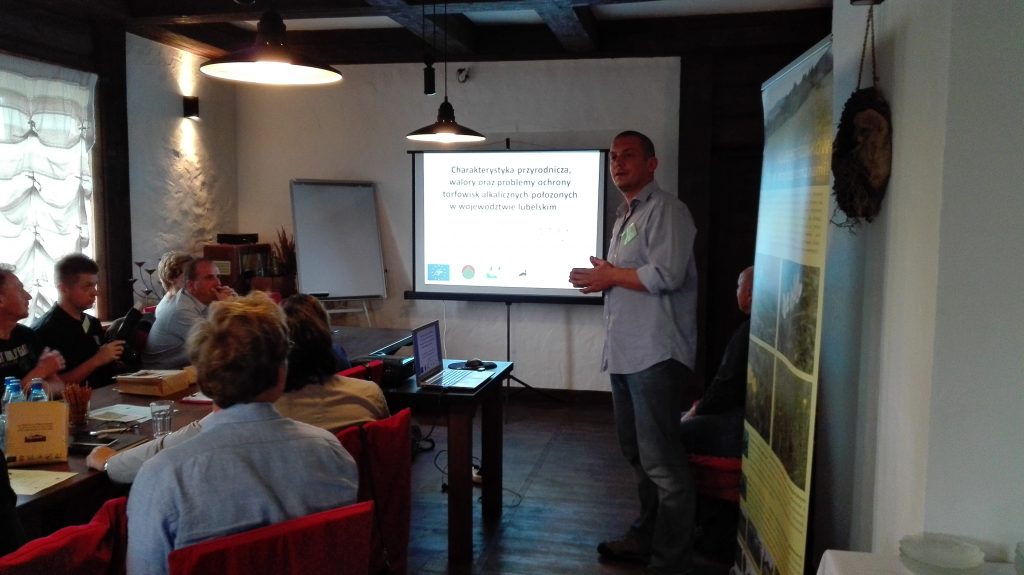
Filip Jarzombkowski presents selected fens in Lublin region.
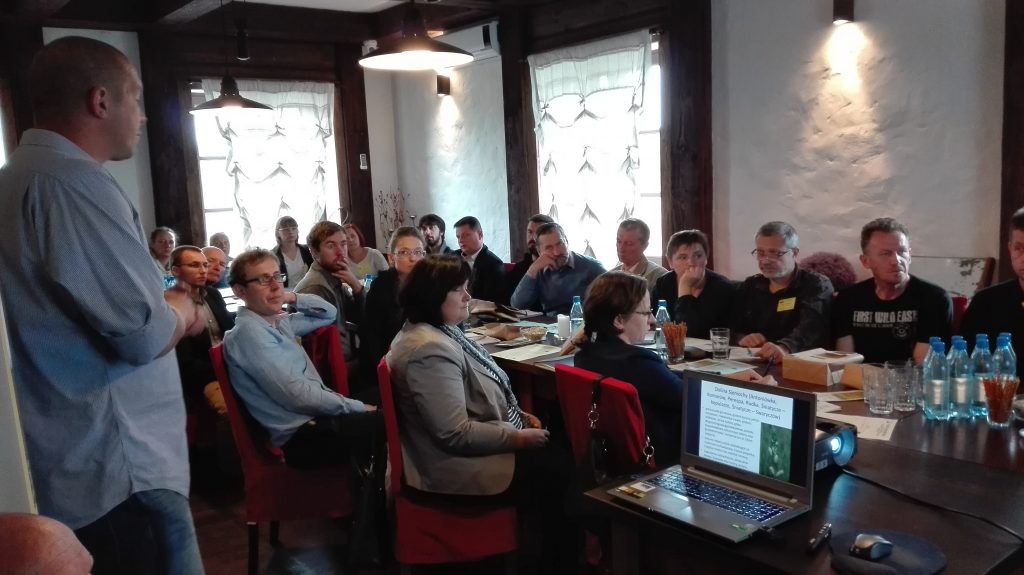
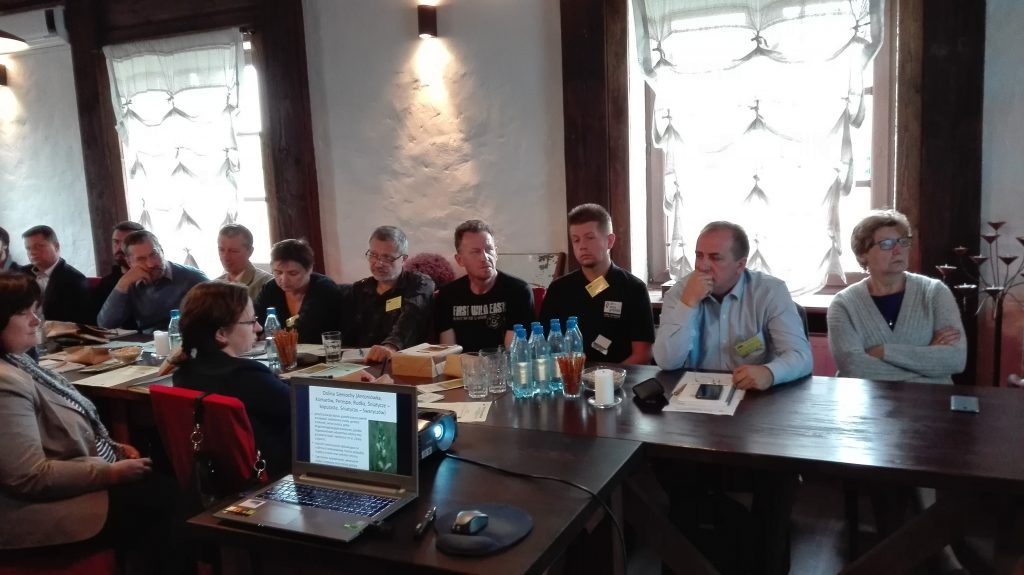
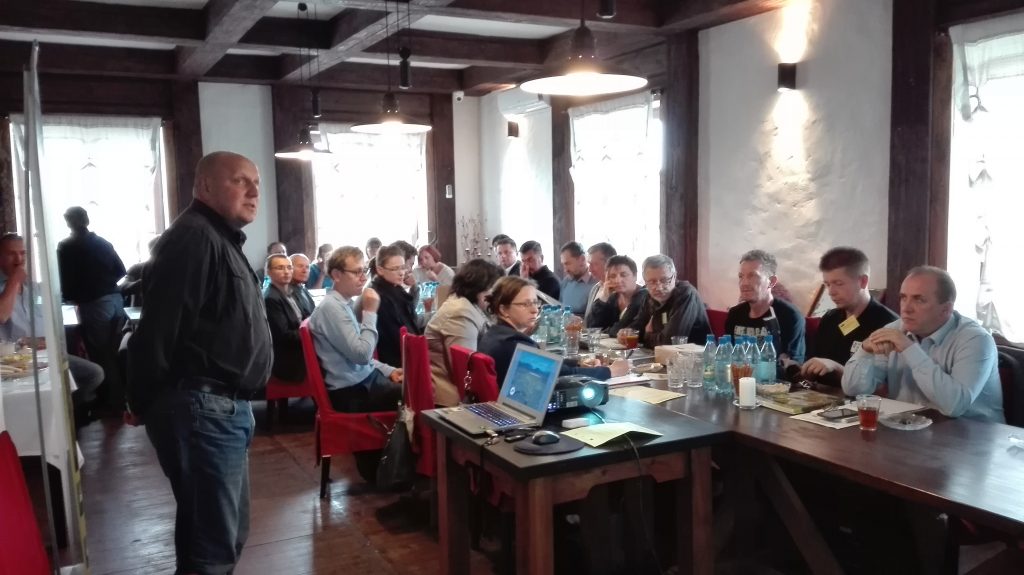
Robert Stańko characterises spring fed fens in Poland
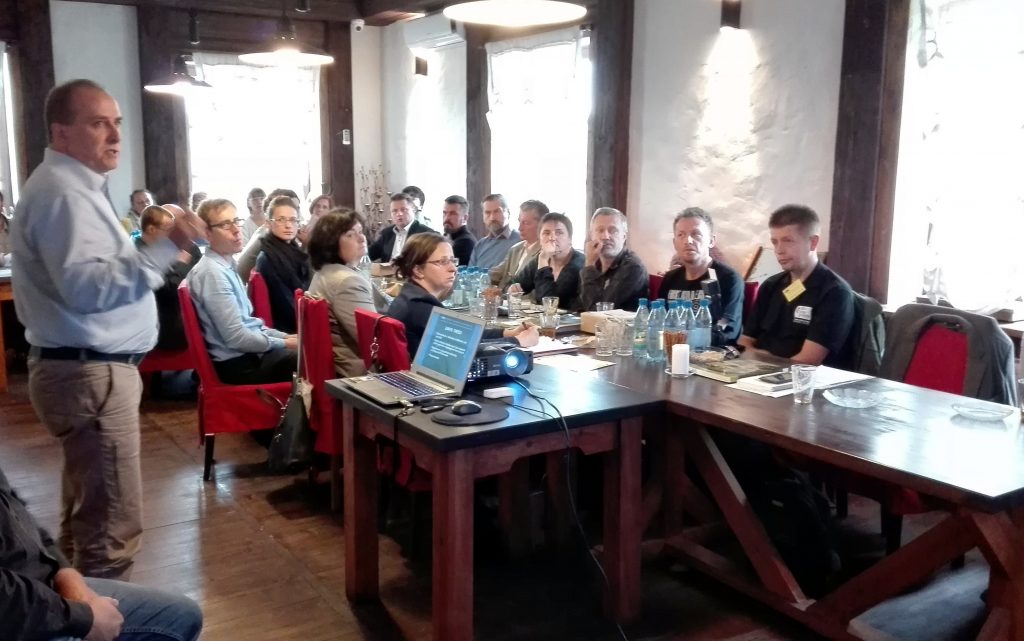
Radosław Dobrowolski with passion tells us on effects of his researches.
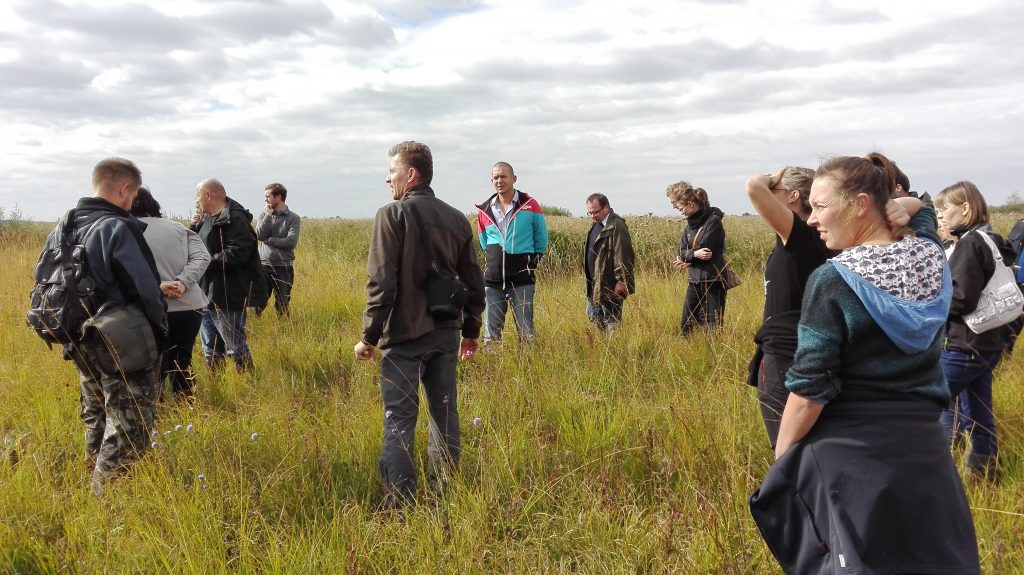
Field trip to Komarów/ Śniatycze site
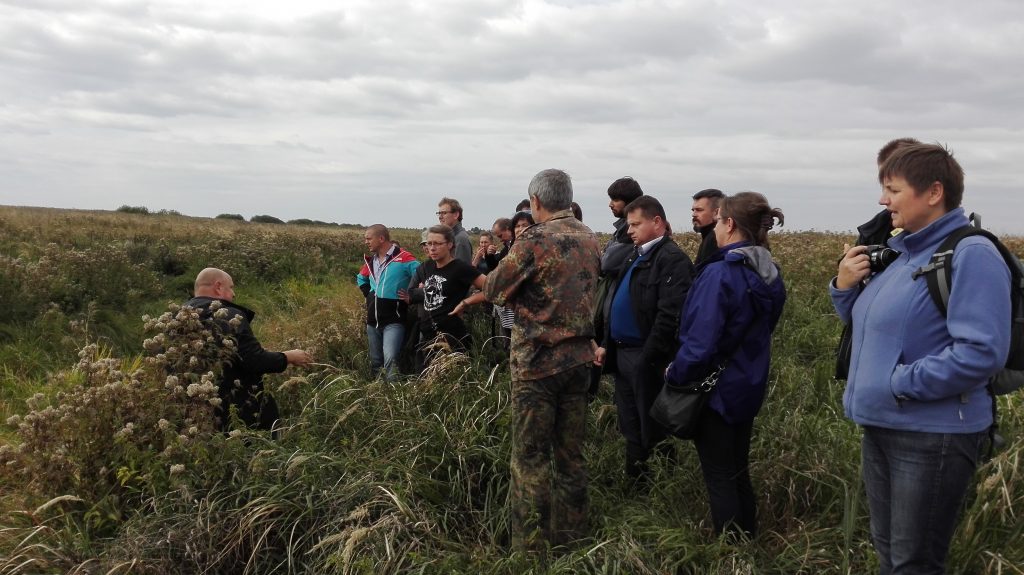
Disscussion on improvement of water conditions
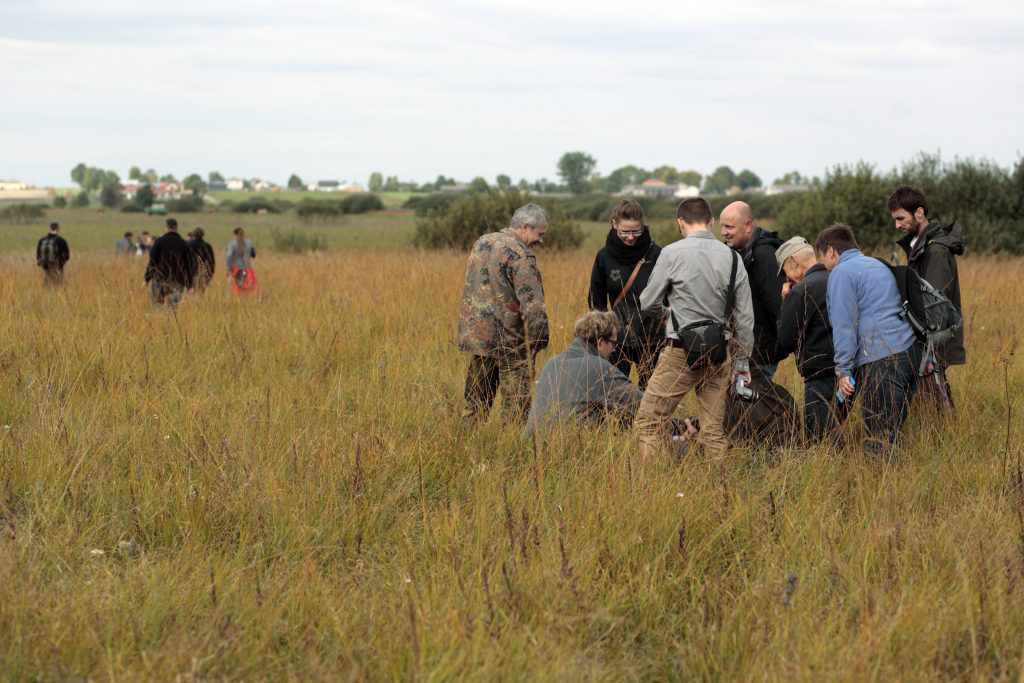
Field trip (fot. Piotr Chmielewski)
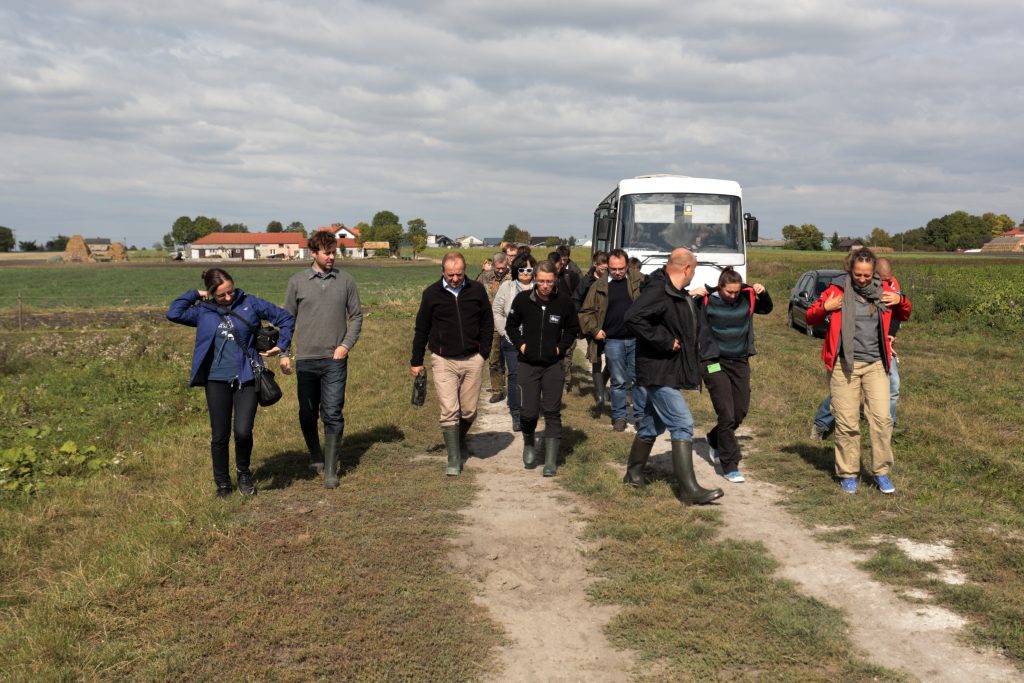
Filed trip (fot. Piotr Chmielewski)
This text is also available in: PL













